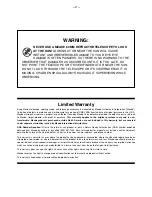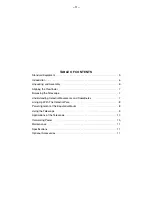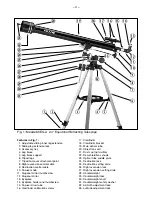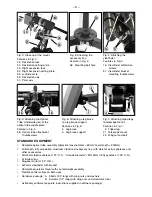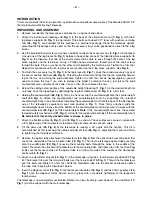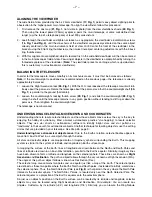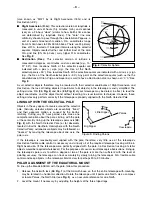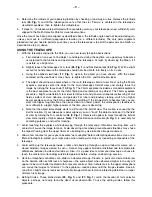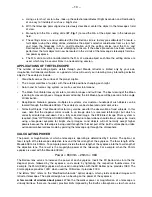
– 10 –
a.
Using a star chart or star atlas, look up the celestial coordinates (Right Ascension and Declination)
of an easy to find object, such as a bright star.
b.
With the telescope polar aligned as previously described, center the object in the telescope’s field
of view.
c.
Manually turn the R.A. setting circle (
27, Fig. 1) to read the R.A. of the object now in the telescopic
field.
d.
The setting circles are now calibrated (the Declination circle is factory pre-calibrated). To locate a
faint object using the setting circles, determine the object’s celestial coordinates from a star chart
and move the telescope in R.A. and Declination until the setting circles read the R.A. and
Declination of the object you are attempting to locate. If the above procedure has been carefully
performed, the faint object will now be located in the vicinity of the telescope’s telescopic field in a
low power eyepiece.
e.
The R.A. circle must be re-calibrated to the R.A. of a known object each time the setting circles are
used, which may be several times in one observing session.
APPLICATIONS OF THE TELESCOPE
The number of fascinating objects visible through your Meade refractor is limited only by your own
imagination. Astronomical software, or a good star atlas will assist you in locating many interesting celestial
objects. These objects include:
•
Cloud belts across the surface of the planet Jupiter.
•
The 4 major satellites of Jupiter, with the satellite positions changing each night.
•
Saturn and its famous ring system, as well as several faint moons.
•
The Moon: A veritable treasury of craters, mountain ranges and fault lines. The best viewing of the Moon
is during its crescent phases. Images observed during the full Moon phase will be poor due to the angle
of illumination.
•
Deep-Space: Nebulae, galaxies, multiple star systems, star clusters—hundreds of such objects can be
located through the Meade 60EQ-A. These objects are best observed under dark skies.
•
Terrestrial Objects: Your Meade refractor may also be used for the observation of land subjects. In this
case, note that the diagonal mirror results in an image which is reversed left-for-right, but which is
correctly oriented up-and-down. For a fully corrected image, the #928 Erect Image Prism system is
required. (See “OPTIONAL ACCESSORIES”). Terrestrial observations should almost always be made
using a low-power eyepiece for bright, sharp images. Land objects will not normally accept higher
powers because the telescope is being used through the thickest part of the Earth’s atmosphere, unlike
astronomical observations made by pointing the telescope up through the atmosphere.
CALCULATING POWER
The power, or magnification, at which a telescope is operating is determined by 2 factors: The optical, or
focal, length of the telescope’s objective lens and the focal length of the eyepiece. The focal length of the
Meade 60EQ-A is 900mm. To compute power, divide the focal length of the eyepiece into the focal length of
the objective lens. The result is the magnifying power of the telescope. For example, when the 25mm
eyepiece is used with the Meade 60EQ-A:
Power = 900mm ÷ 25mm = 36X
The Barlow lens serves to increase the power of each eyepiece. Insert the 2X Barlow lens into the the
diagonal prism, followed by the eyepiece, and secure by tightening the respective thumbscrews. For
example, the 25mm (36X) eyepiece, when used in conjunction with the 3X Barlow Lens, provides 108X. The
9mm eyepiece provides 100X; when used the 2X Barlow, it provides 200X.
The letters “MA” refers to the “Modified Achromatic” optical design, which yields corrected images with
refractor telescopes. The optical design has no bearing on the power of the eyepiece.
A few words of wisdom about power. While the theoretical power or magnification of a telescope is
virtually limitless, there are, however, practical limits imposed by the Earth’s atmosphere as to what can be
Содержание 60EQ-A
Страница 12: ......


